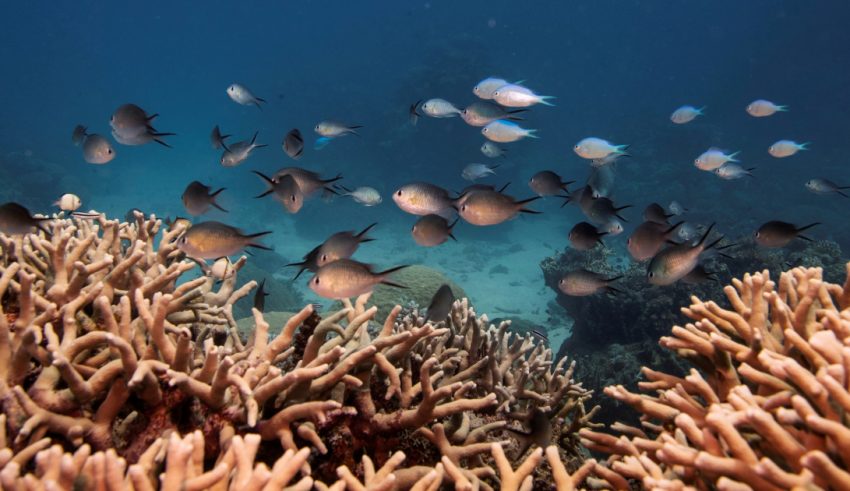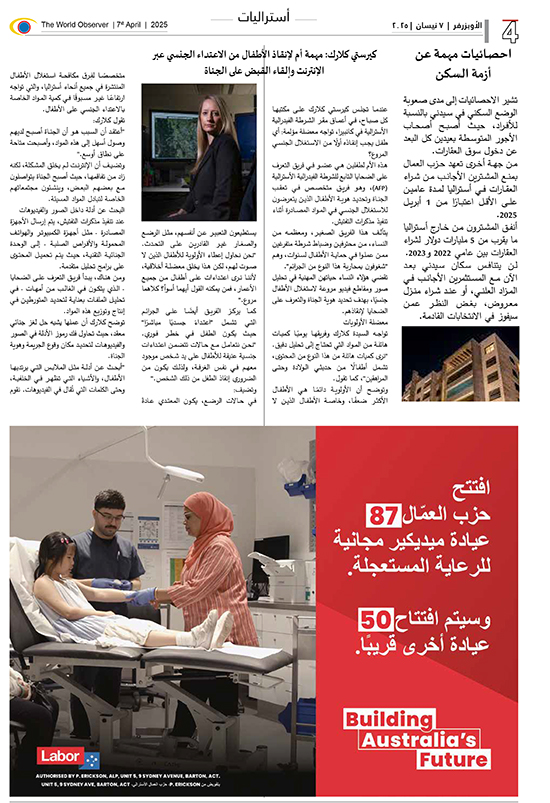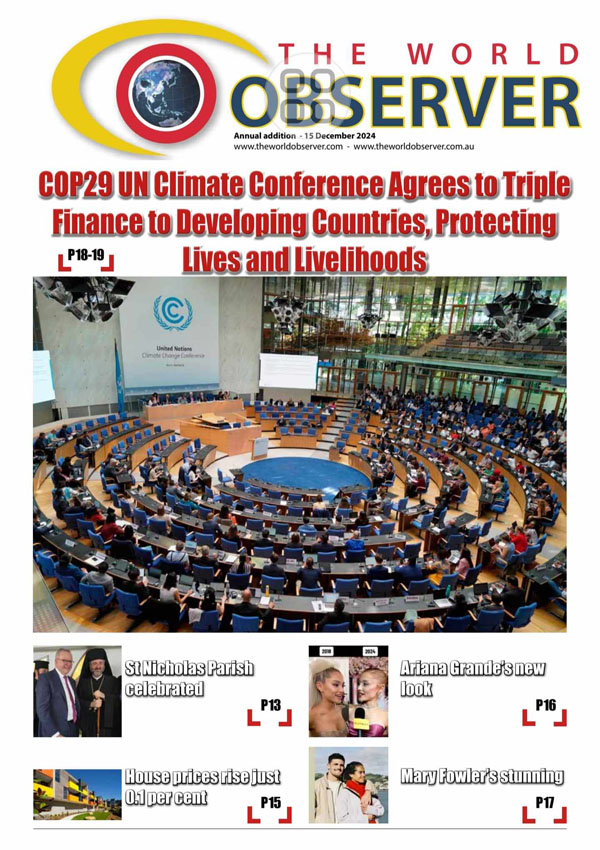
Amid growing concerns the Great Barrier Reef is reaching an environmental tipping point beyond repair, there is hope two sections of the natural wonder could persist even on a warming planet.
And there are recommendations that both sections be given greater protection from pressures like fishing and shipping.
New modelling shows the outlying reefs in the Eastern Torres Strait and the Whitsundays could stay 1 degree Celsius cooler than their neighbouring reefs through to 2080, in a worse-case scenario where greenhouse gas emissions continue unabated.
The areas of climate refugia — habitats largely buffered from climate change where populations of organisms can survive unfavourable conditions — were described in a study published today in Science Advances.
Bleaching happens when coral, a living organism, expels algae which it needs to survive because of environmental pressures like heat stress.
The research was conducted by the Commonwealth Scientific and Industrial Research Organisation (CSIRO), Australian Institute of Marine Science and several Australian universities.
Lead author Chaojiao Sun, a CSIRO physical oceanographer, said whether corals actually could survive in these cooler regions was stillunknown.
“I guess the good news is we used this worst-case emissions scenario which we are not tracking on anymore thanks to global climate actions,” Dr Sun said.
Even if the identified reefs did not survive into the 2080s, Dr Sun said the research showed they could be the best place to protect corals in the next 20 to 30 years and provide a focus point for more research.
“We have identified these high value regions that are worthy of protecting to give them the best chance to survive and to replenish the other coral reefs.”
Where are these reefs and why are they cooler?
Both northern and southern climate refugia were found on the eastern edge of the Great Barrier Reef.
The northern zone stretches along the outer shelf from the eastern Torres Strait to the ribbon reefs off Cape York.
The other main refugium is east of Mackay in the Pompey and Swain reef complexes.
Both sites were less affected or escaped coral bleaching in the six mass bleaching events between 1998 and 2022.
Dr Sun said the research team wanted to examine why this was happening and model if it would persist in the coming decades.
To do this, they undertook the first high resolution regional ocean modelling of the Great Barrier Reef in a climate scenario known as Representative Concentration Pathway 8.5. This is also referred to as “business as usual”, where the world’s nations do nothing to abate record levels of carbon emissions.
Upwelling is when warm surface water is moved from an area, allowing for cooler, nutrient-rich water from deep to rise above and replace it.
The major mechanism for upwelling in the climate refugia of the Great Barrier Reef was found to be the tide.
Coral bleaching at the Keppel Islands in the southern Great Barrier Reef in 2024.
Dr Sun said the two climate refugia had tightly packed outer shelf reefs, which explained why the upwelling was so effective in keeping temperatures 1C cooler on average over a summer.
“When you have the tidal currents coming through these very narrow reef channels … they have to squeeze through and become very strong, so they create very vigorous mixing of deep cool water with the warm surface water,” she said.
“This doesn’t happen as consistently in the central Great Barrier Reef because the reefs are quite sparse … so the cool water stays near the bottom.”
According to the modelling, the upwelling will keepthe northern and southern zonescooler than their neighbouring reefs through to 2080.
Oceanographer Jennifer McWhorter, from the US National Oceanic and Atmospheric Administration, said the study was excellent but that the ecological andbiological response to warming was not well understood.
“Our understanding of the biological responses to warming in the identified climate refugia regions of the Great Barrier Reef remains limited,” Dr McWhorter said.
That’s primarily because these areas are located far offshore and difficult to study due to containing deeper reef habitats, she said.
“For instance, the range of variability in some of these [refugia] areas may be small, meaning that even a slight increase in the variability could jeopardise coral populations.”
Dr McWhorter, who was not involved in the study, said future research should incorporate biological and ecological models to better understand the warming thresholds for specific species and habitats in offshore regions.
But she also said climate change remained a significant threat to the Great Barrier Reef despite the findings of the study.
Earlier this year, the southern climate refugia was hit by mass bleaching despite its natural protection.
When the researchers put 2024 data into their model (which was not included in time for the published study), Dr Sun said the upwelling effect was still there but other environment factors had made it less effective that summer.
But she said the two climate refugia should still be prioritised for greater protection as they were still cooler on average than other areas.
Management changes proposed
While a lot of the Great Barrier Reef falls into a marine park area, it has varying levels of protection, withsome of it is still open to other uses like shipping and fishing.
The study found 17 per cent of the southern refugium was zoned for general-use activities like fishing.
It also found large parts of the northern reef were located outside of marine park boundaries and were instead managed by the Torres Strait Regional Authority.
Dr McWhorter said future environmental management measures should focus on reducing stress on the reef created by humans, such as ship traffic and fishing.
Dr Sun added these areas could also be prioritised for interventions to help restore coral reefs, such as assisted colonisation or evolution of corals.
With intense marine heatwaves occurring more frequently, Great Barrier Reef Marine Park Authority acting chief scientist Jessica Stella,a study co-author, said identifying and protecting areas of climate refugia was critical to improve the reef’s long-term outlook.
But ultimately, the best intervention for the reefs, according to the study, is for global climate action that would limit the frequency and severity of reefs being exposed to heat stress.






































 The World Observer Media produces a daily online newspaper, a daily Arabic online newspaper and a monthly printed Arabic/English magazine and a weekly printed Arabic/English newspaper.
The World Observer Media’s mission is to entertain and educate all generation from the Ethnic Communities in Australia, who are interested in local, national and foreign information.
The World Observer Media produces a daily online newspaper, a daily Arabic online newspaper and a monthly printed Arabic/English magazine and a weekly printed Arabic/English newspaper.
The World Observer Media’s mission is to entertain and educate all generation from the Ethnic Communities in Australia, who are interested in local, national and foreign information. 


